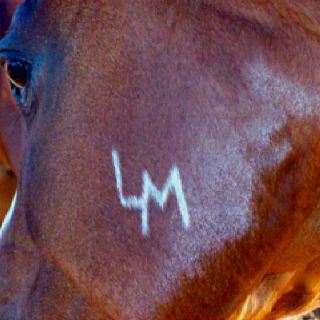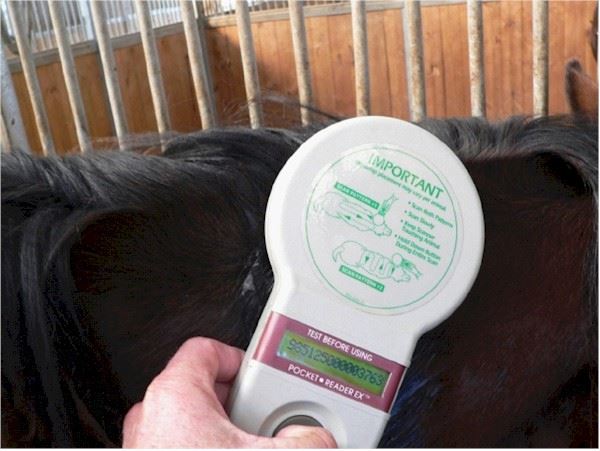The majority of equestrians understand the need to permanently identify their horses: in case of natural disaster, in case of theft, in case a horse gets lost. But what options are available?
By Sarah E. Coleman
We have all heard horror stories of horses that have dumped their rider and gone missing – sometimes for days on end (remember Lemon?) or horses that are victims of natural disasters, ending up far from home with no way to identify who they are or whose they are.
But what can a horse owner do to ensure that their horse will have a higher chance of being returned should they part ways?
Tattooing
While many riders of Thoroughbreds are familiar with tattooing as a method of identification, a tattoo is not fail-proof. In the United States, racehorses are tattooed on their upper lip. While clear and easy to read when first applied, as the horse gets older, his tattoo may fade and become blurry.
Hot Branding
Another option for tattooing your horse is hot branding, which involves heating a metal brand and applying it to the neck, shoulder or flank (or other area) of a horse. A hot brand works by destroying the hair follicles where it is applied, creating a pattern. Hot brands can become distorted over time by hair growing over the brand; they are also not as visible on light-skinned horses.
Freeze Branding

Freeze branding is a method of identification that doesn’t cause discomfort like hot branding or tattooing does. Freeze brands are made by chilling a metal brand in liquid nitrogen, then applying it to the horse (usually under the mane). This type of branding leaves a white brand on darker-colored horses and a pink brand (the color of the skin) on light-skinned horses. It’s important to note that both hot brands and freeze brands can be altered.
Microchips

Relatively new on the scene, microchips are a permanent, unalterable way to identify your horse. However, to positively ID the animal, a microchip reader must be available. Nicknamed “VIN numbers for horses,” a microchip is about the size of a grain of rice. It is implanted relatively painlessly into the nuchal ligament in the horse’s neck.
The chips itself is sealed in a biocompatible glass and covered in a sheath to prevent migration. The chip emits a low-power radio frequency identification (RFID) signal when activated by a scanner. The scanner then displays the information associated with the chip. The person reading the scanner must then contact the appropriate registry or database to get the info attached with that chip number (so it will never display all of your contact information on a scanner).
There are a few potential downfalls to microchipping. These include:
- Not all scanners can read all chips. As new microchip companies are established, they create chips with different frequencies, meaning that not all scanners can read all the microchips on the market. This can create a problem for positively identifying an animal
- There is no national registry for the storage of microchip ID and retrieval of owner information
- Microchips can migrate. Though unusual, microchips can migrate from their original insertion site, making them unable to be found and read
The Jockey Club is now requiring microchipping of all foals registered in 2017 and later, and the United States Equestrian Federation is requiring that all horses competing in classes that required USHJA horse registration be chipped, as well. The industry is trending toward microchipping as way of permanent identifying horses.
